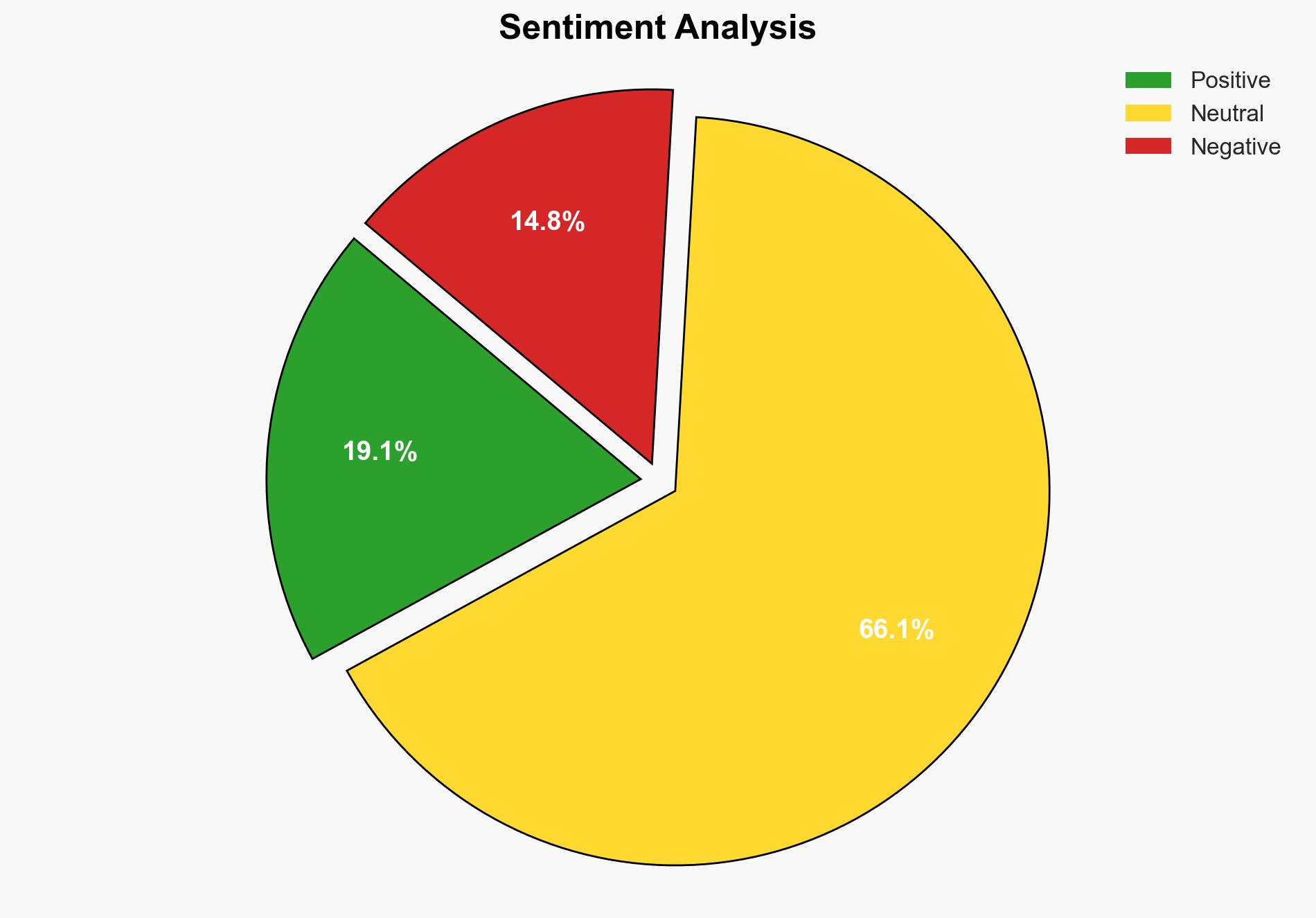Oil Rises Amid Demand Optimism Despite Fed Outlook – Rigzone
Published on: 2025-03-19
Intelligence Report: Oil Rises Amid Demand Optimism Despite Fed Outlook – Rigzone
1. BLUF (Bottom Line Up Front)
Oil prices have risen due to optimism about demand, despite the Federal Reserve’s outlook indicating slow economic growth. West Texas Intermediate (WTI) and Brent crude prices have increased, driven by low distillate inventories and gasoline stockpiles. The geopolitical landscape, including tensions involving Iran, Yemen, and the ongoing Russia-Ukraine conflict, continues to influence market dynamics. Stakeholders should monitor these developments closely to anticipate potential impacts on global oil markets.
2. Detailed Analysis
The following structured analytic techniques have been applied for this analysis:
General Analysis
Recent data indicates a rise in oil prices, with WTI advancing to settle at $77.69 per barrel and Brent climbing to $84.31 per barrel. The increase is attributed to a drop in distillate inventories to a 15-month low and gasoline stockpiles reaching their lowest since January. Despite the Federal Reserve’s forecast of slow economic growth, demand optimism persists, partly due to a weaker dollar enhancing the appeal of commodities priced in the currency.
The American Petroleum Institute reported a small gain in crude stockpiles, while reserves at the Cushing hub fell. Market participants are parsing mixed geopolitical signals, including pressure on Iran and the ongoing Russia-Ukraine conflict. These factors contribute to choppy trading conditions and influence oil price volatility.
3. Implications and Strategic Risks
The rise in oil prices amid demand optimism poses several strategic risks. Key risks include potential disruptions in oil supply due to geopolitical tensions, particularly involving Iran and the Russia-Ukraine conflict. Additionally, economic slowdowns in major economies, as forecasted by the Federal Reserve, could dampen demand and lead to price volatility. These factors could impact national security, regional stability, and economic interests globally.
4. Recommendations and Outlook
Recommendations:
- Monitor geopolitical developments closely, particularly in the Middle East and Eastern Europe, to anticipate potential supply disruptions.
- Consider diversifying energy sources to mitigate risks associated with oil price volatility.
- Encourage investment in renewable energy technologies to reduce dependency on fossil fuels.
Outlook:
Best-case scenario: Geopolitical tensions ease, leading to stable oil supply and moderate price increases.
Worst-case scenario: Escalation of conflicts results in significant supply disruptions and sharp price spikes.
Most likely scenario: Continued price volatility due to mixed signals from economic forecasts and geopolitical developments.
5. Key Individuals and Entities
The report mentions significant individuals and organizations, including John Kilduff, Tamas Varga, Donald Trump, and Volodymyr Zelenskiy. These individuals are influential in shaping market perceptions and geopolitical strategies.





